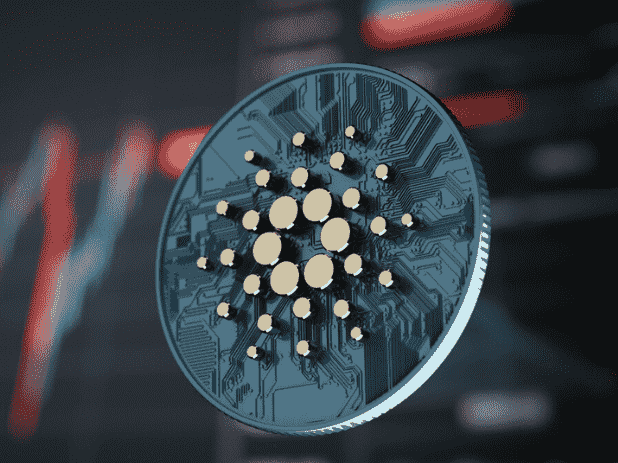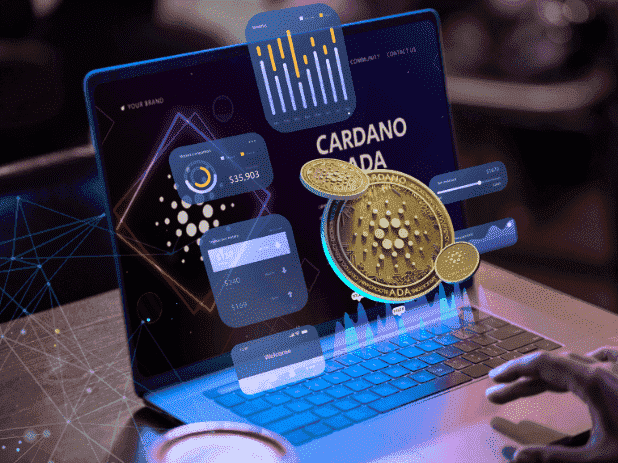Cardano (ADA) is a blockchain platform that aims to provide a more secure and scalable infrastructure for the development and execution of decentralized applications (dApps) and smart contracts. It distinguishes itself from other blockchain platforms through its commitment to peer-reviewed scientific research as the basis for its updates and improvements.
Cardano’s native cryptocurrency is ADA, named after 19th-century mathematician Ada Lovelace. ADA is used as a digital currency and also allows holders to participate in the operation of the network. It was launched after the birth of Bitcoin.
You have not selected any currency to displayWhat is Cardano’s ADA Staking
Cardano uses a PoS consensus algorithm called Ouroboros. In Ouroboros, ADA holders who stake their coins participate in the validation of transactions and the creation of new blocks and receive rewards in return.
Staking Process
In Cardano’s system, ADA holders either run their staking pool (become a stake pool operator) or delegate their ADA to an existing stake pool. Running a pool requires technical knowledge and consistent network participation. Whereas, delegation is a simpler process where you allocate your ADA to a pool run by someone else.
When a stake pool participates in creating a new block, it earns rewards. These rewards are then distributed among the pool operator and the ADA holders, proportional to the amount of ADA staked.
Staking helps secure the network. The more ADA staked, the more robust the network becomes. It also creates decentralization as more stakeholders participate in the network’s operation.
Now, let’s go through some more features of Cardano’s ADA.

Exporing Cardano (ADA)
ADA is used for a variety of functions within the Cardano platform including transferring value, paying for transactions, staking, participating in the network’s governance, and interacting with applications built on the platform. The following are the key features of Cardano (ADA):
-
Layered Architecture
Cardano has a unique two-layer architecture known as the Cardano Settlement Layer (CSL) and the Cardano Computation Layer (CCL). The CSL is responsible for handling ADA transactions while the CCL is used for smart contracts and applications. This separation allows for more flexibility and easier updates to the system.
-
Scalability, Interoperability, and Sustainability
Cardano aims to solve the scalability issues faced by older blockchains. It also focuses on interoperability (the ability to work with different blockchains) and sustainability (maintaining the blockchain in the long term, both technologically and economically).
-
Formal Verification & Peer-Reviewed Research
Academic research forms the foundation of Cardano’s development. Scientists and programmers thoroughly review its protocols. This scientific approach aims for high security and stability for the network.
-
Smart Contract Functionality
Cardano supports the development of decentralized applications (dApps) and smart contracts. This enables developers to build a wide range of decentralized services and applications on its blockchain.
-
Governance and Treasury System
Cardano has a built-in governance system that allows ADA holders to vote on future developments and improvements. There is also a treasury system for sustainable funding for these developments.
-
Upgradability
Due to its layered architecture, Cardano implements minor updates for upgrades without causing major disruptions to the network. This makes it easier to implement improvements over time.
-
Availability
ADA is purchased on various cryptocurrency exchanges and stored in a variety of wallets including those specifically designed for Cardano.
-
Investment and Speculation
ADA is subject to market speculation and is traded on various cryptocurrency exchanges. Its value can fluctuate based on market trends, investor sentiment, and broader developments within the blockchain and cryptocurrency space.

Performance Analysis of Cardano (ADA)
Cardano’s ADA has experienced a fluctuating performance compared to other cryptocurrencies. As of January 2024, ADA’s price decreased a bit after a strong performance in the last quarter of 2023. It started the year trading at $0.61 but fell to around $0.53 which marked an 11% decrease since the start of the year. Despite this, ADA was still up by 20% in the past month and was expected to test the $0.65 mark in January 2024. This price increase was due to greater adoption of Cardano and an increase in staking rewards and transactions on the blockchain.
Stock market conditions also influence ADA’s performance. It saw a significant surge in 2023 with a 150% increase in value throughout the year. This impressive uptrend was due to the substantial growth in critical elements of the Cardano platform including a surge in users for its Decentralized Exchange (DEX) and Non-Fungible Token (NFT) trading platform.
Currently, the price of Cardano’s ADA is around $0.49.
Challenges & Criticisms
Cardano’s ADA faces several challenges and criticisms that are important for users and investors to consider:
Speed of Development:
Cardano’s emphasis on peer-reviewed research and high-assurance code means that updates and new functionalities might take longer to implement compared to other projects that adopt a more rapid development cycle.
Network Adoption and dApp Ecosystem:
Cardano’s platform of decentralized applications (dApps) is still in its growth phase. This means it might not have as many active dApps or as high a level of network utilization as more established platforms which could affect its competitiveness and attractiveness to developers and users.
Scalability Questions:
Cardano aims to solve older blockchains’ scalability issues. However, it must still prove its efficiency in handling a growing number of transactions. This is necessary as its user base and transaction volume increase.
Competition with Other Blockchains:
Cardano faces intense competition from other blockchain projects including Ethereum which is also transitioning to a proof-of-stake consensus mechanism. The ability of Cardano to differentiate itself and capture a significant market share is a challenge.
Regulatory and Compliance Issues:
The cryptocurrency market including ADA faces regulatory uncertainties. Changes in regulations or unfavorable legal developments in key markets impact the adoption and price of ADA.
Market Volatility:
ADA is also subject to high market volatility. This is a risk for investors and users who might see significant fluctuations in the value of their holdings.

